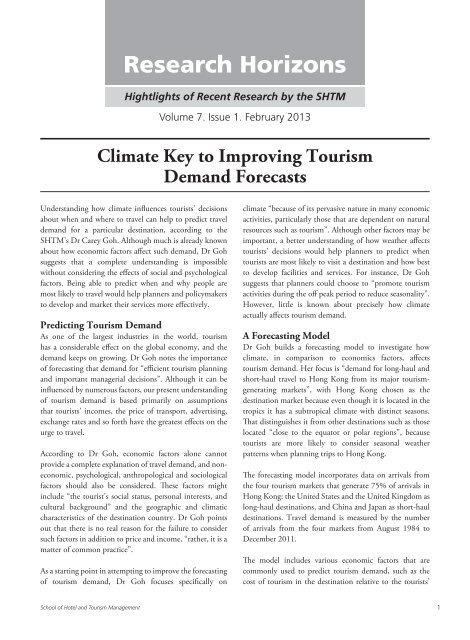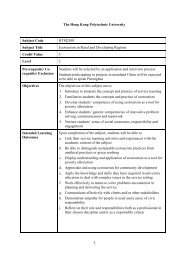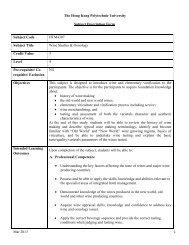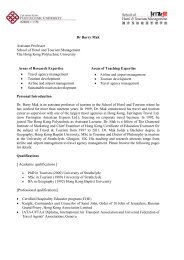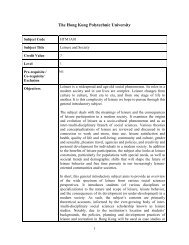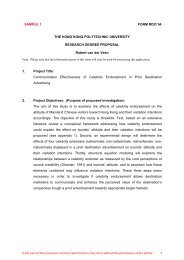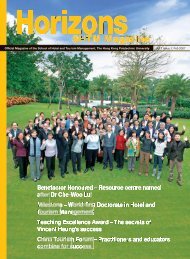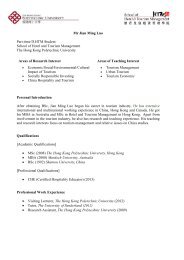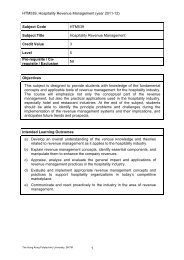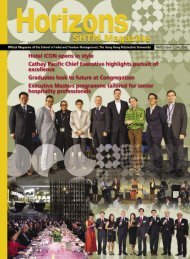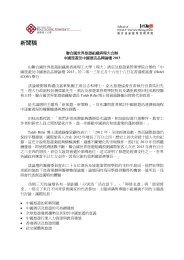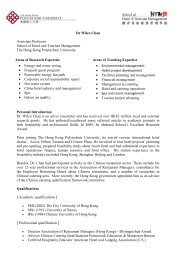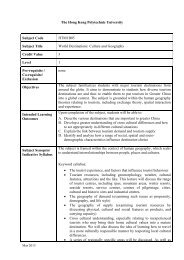Vol 13 Issue 1, February 2013 - School of Hotel & Tourism ...
Vol 13 Issue 1, February 2013 - School of Hotel & Tourism ...
Vol 13 Issue 1, February 2013 - School of Hotel & Tourism ...
Create successful ePaper yourself
Turn your PDF publications into a flip-book with our unique Google optimized e-Paper software.
Research Horizons<br />
Hightlights <strong>of</strong> Recent Research by the SHTM<br />
<strong>Vol</strong>ume 7. <strong>Issue</strong> 1. <strong>February</strong> 20<strong>13</strong><br />
Climate Key to Improving <strong>Tourism</strong><br />
Demand Forecasts<br />
Understanding how climate influences tourists’ decisions<br />
about when and where to travel can help to predict travel<br />
demand for a particular destination, according to the<br />
SHTM’s Dr Carey Goh. Although much is already known<br />
about how economic factors affect such demand, Dr Goh<br />
suggests that a complete understanding is impossible<br />
without considering the effects <strong>of</strong> social and psychological<br />
factors. Being able to predict when and why people are<br />
most likely to travel would help planners and policymakers<br />
to develop and market their services more effectively.<br />
Predicting <strong>Tourism</strong> Demand<br />
As one <strong>of</strong> the largest industries in the world, tourism<br />
has a considerable effect on the global economy, and the<br />
demand keeps on growing. Dr Goh notes the importance<br />
<strong>of</strong> forecasting that demand for “efficient tourism planning<br />
and important managerial decisions”. Although it can be<br />
influenced by numerous factors, our present understanding<br />
<strong>of</strong> tourism demand is based primarily on assumptions<br />
that tourists’ incomes, the price <strong>of</strong> transport, advertising,<br />
exchange rates and so forth have the greatest effects on the<br />
urge to travel.<br />
According to Dr Goh, economic factors alone cannot<br />
provide a complete explanation <strong>of</strong> travel demand, and noneconomic,<br />
psychological, anthropological and sociological<br />
factors should also be considered. These factors might<br />
include “the tourist’s social status, personal interests, and<br />
cultural background” and the geographic and climatic<br />
characteristics <strong>of</strong> the destination country. Dr Goh points<br />
out that there is no real reason for the failure to consider<br />
such factors in addition to price and income, “rather, it is a<br />
matter <strong>of</strong> common practice”.<br />
As a starting point in attempting to improve the forecasting<br />
<strong>of</strong> tourism demand, Dr Goh focuses specifically on<br />
climate “because <strong>of</strong> its pervasive nature in many economic<br />
activities, particularly those that are dependent on natural<br />
resources such as tourism”. Although other factors may be<br />
important, a better understanding <strong>of</strong> how weather affects<br />
tourists’ decisions would help planners to predict when<br />
tourists are most likely to visit a destination and how best<br />
to develop facilities and services. For instance, Dr Goh<br />
suggests that planners could choose to “promote tourism<br />
activities during the <strong>of</strong>f peak period to reduce seasonality”.<br />
However, little is known about precisely how climate<br />
actually affects tourism demand.<br />
A Forecasting Model<br />
Dr Goh builds a forecasting model to investigate how<br />
climate, in comparison to economics factors, affects<br />
tourism demand. Her focus is “demand for long-haul and<br />
short-haul travel to Hong Kong from its major tourismgenerating<br />
markets”, with Hong Kong chosen as the<br />
destination market because even though it is located in the<br />
tropics it has a subtropical climate with distinct seasons.<br />
That distinguishes it from other destinations such as those<br />
located “close to the equator or polar regions”, because<br />
tourists are more likely to consider seasonal weather<br />
patterns when planning trips to Hong Kong.<br />
The forecasting model incorporates data on arrivals from<br />
the four tourism markets that generate 75% <strong>of</strong> arrivals in<br />
Hong Kong: the United States and the United Kingdom as<br />
long-haul destinations, and China and Japan as short-haul<br />
destinations. Travel demand is measured by the number<br />
<strong>of</strong> arrivals from the four markets from August 1984 to<br />
December 2011.<br />
The model includes various economic factors that are<br />
commonly used to predict tourism demand, such as the<br />
cost <strong>of</strong> tourism in the destination relative to the tourists’<br />
<strong>School</strong> <strong>of</strong> <strong>Hotel</strong> and <strong>Tourism</strong> Management 1


